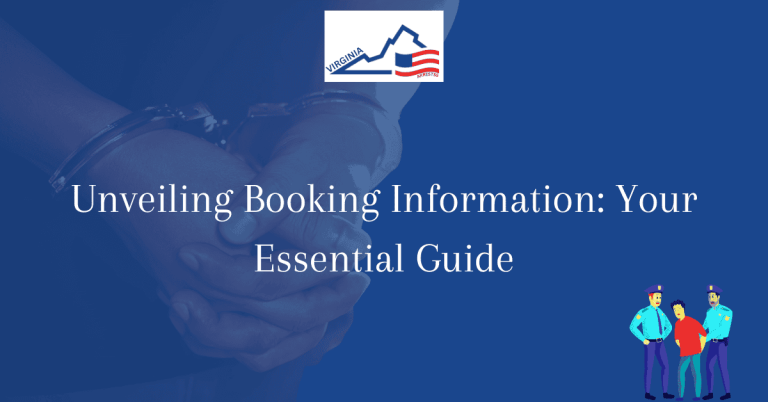Enhancing Arrests Records Security: Key Strategies
Arrest records security is a critical aspect of maintaining public safety and upholding the integrity of the legal system. Implementing key strategies to enhance the security of arrests records plays a vital role in safeguarding sensitive information and preventing unauthorized access. By focusing on robust security measures and efficient protocols, organizations can mitigate risks and ensure the confidentiality of crucial data.
Effective strategies such as encryption, access controls, and regular audits are essential in fortifying arrests records security. By proactively addressing potential vulnerabilities and staying abreast of evolving threats, law enforcement agencies can enhance the overall protection of sensitive information. Implementing these key strategies is paramount in maintaining the trust of the public and upholding the credibility of the criminal justice system.
Encryption Protocols for Arrest Records Security
When it comes to securing arrest records, implementing encryption protocols is crucial. Encryption involves encoding data in such a way that only authorized users can access it. By encrypting arrest records, sensitive information is protected from unauthorized access, ensuring the confidentiality and integrity of the data. Utilizing strong encryption algorithms adds an extra layer of security, making it difficult for hackers or cyber criminals to decipher the information.
Implementing Secure Databases for Protection
Secure databases play a vital role in safeguarding arrest records. By implementing access controls and encryption mechanisms, databases can prevent unauthorized users from tampering with or stealing sensitive information. Secure databases also provide audit trails, allowing administrators to track any changes made to the records and identify potential security breaches.
Importance of Access Controls in Safeguarding Data
Access controls are essential in protecting arrest records from unauthorized access. By limiting who can view, edit, or delete records, access controls ensure that only authorized personnel can interact with the data. Implementing role-based access control further enhances security by assigning specific permissions based on job responsibilities, reducing the risk of data breaches.
Audits and Updates for Maintaining Data Integrity
Regular audits and updates are necessary for maintaining the integrity of arrest records. Audits help identify any anomalies or discrepancies in the data, allowing administrators to take corrective action promptly. Updating encryption protocols and access controls also ensures that the security measures remain effective against evolving threats.
Staying Vigilant Against Potential Security Threats
Arrest records are prime targets for cybercriminals, making it essential to stay vigilant against potential security threats. By conducting regular security assessments and vulnerability scans, organizations can identify and mitigate any weaknesses in their security infrastructure. Training staff on cybersecurity best practices also helps prevent security breaches.
Proactive Measures to Prevent Unauthorized Access
Taking proactive measures to prevent unauthorized access is key to enhancing arrest records security. This includes implementing multi-factor authentication, regularly changing passwords, and monitoring user activity for any suspicious behavior. By staying proactive, organizations can reduce the risk of data breaches and protect sensitive information.
Ensuring Confidential Information Protection at All Times
Confidential information protection should be a top priority when it comes to arrest records security. By implementing robust data encryption, access controls, and security protocols, organizations can ensure that confidential information is safeguarded at all times. Regular training on data security best practices also helps maintain a culture of security awareness among staff.
Frequently Asked Questions
Our Frequently Asked Questions section aims to provide detailed information on enhancing arrest records security through key strategies.
What are the key strategies for enhancing arrest records security?
Enhancing arrest records security involves implementing encryption protocols, access controls, regular audits, and secure storage measures. These strategies help prevent unauthorized access and ensure data integrity.
Why is enhancing arrest records security important?
Enhancing arrest records security is crucial to protect sensitive information from cyber threats, identity theft, and unauthorized use. It helps maintain the integrity and confidentiality of arrest records, safeguarding individuals’ privacy rights.
How can encryption protocols improve arrest records security?
Encryption protocols encode arrest records into unreadable formats, making it difficult for unauthorized users to access or manipulate the data. By implementing strong encryption algorithms, organizations can enhance data confidentiality and prevent data breaches.
What role do access controls play in enhancing arrest records security?
Access controls restrict users’ permissions based on their roles and responsibilities, ensuring that only authorized personnel can view or modify arrest records. By implementing granular access controls, organizations can minimize the risk of data misuse or unauthorized access.
Why is regular auditing essential for arrest records security?
Regular audits help organizations identify security gaps, unauthorized access attempts, and compliance issues related to arrest records management. By conducting thorough audits, organizations can proactively address security vulnerabilities and ensure regulatory compliance.
How can secure storage measures enhance arrest records security?
Secure storage measures, such as data encryption, restricted access, and backup protocols, help protect arrest records from physical theft, cyberattacks, and data loss. By implementing secure storage practices, organizations can mitigate risks and ensure data availability in case of emergencies.







